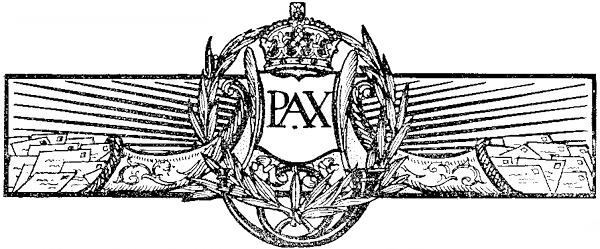Roman Provincias > Provincia Dacia Aureliana
Provincia Dacia Aureliana

Background
Provincia Dacia Aureliana was a Roman province established by Emperor Aurelian in the 3rd century CE, named after himself, after he reconquered parts of the former province of Dacia Traiana. It was situated in the Danube region, covering parts of modern-day Romania and Serbia. Here's an overview:
Background and Establishment:
Dacia was originally conquered by the Roman Emperor Trajan in two military campaigns, in 101-102 CE and 105-106 CE. It became a Roman province known as Dacia Traiana, encompassing much of modern-day Romania and parts of Bulgaria and Serbia.Due to pressure from invading barbarian tribes, particularly the Goths, Emperor Aurelian decided to evacuate Roman troops and settlers from Dacia Traiana in the early 3rd century CE. However, Aurelian maintained control over some portions of the region, creating the new province of Dacia Aureliana.
Geography and Borders:
Dacia Aureliana was situated along the northern bank of the Danube River, bordered by the Carpathian Mountains to the west and the Tisza River to the south. It covered a smaller area than its predecessor, Dacia Traiana, focusing on the more defensible regions closer to the Danube.The province's strategic location along the Danube made it vulnerable to attacks from barbarian tribes, but also facilitated trade and communication with other Roman provinces along the river.
Administration and Capital:
The administrative center of Dacia Aureliana was likely established at Sarmizegetusa, which had been the capital of Dacia Traiana. Sarmizegetusa served as the political, military, and economic hub of the province, with its well-fortified citadel overlooking the surrounding countryside.
Dacia Aureliana was governed by a Roman procurator or governor appointed by the emperor. The provincial administration was responsible for maintaining order, collecting taxes, and overseeing the province's defense.
Economy and Society:
The economy of Dacia Aureliana was primarily agrarian, with farming and animal husbandry being the main economic activities. The province's fertile plains supported the cultivation of grains, fruits, and vegetables, while livestock such as sheep, cattle, and pigs were raised for meat, dairy, and wool. Mining was another important industry in Dacia Aureliana, with rich deposits of gold, silver, iron, and other minerals found in the region. These resources were exploited for export to other provinces of the Roman Empire.
Military Presence and Defense:
Dacia Aureliana was heavily militarized due to its vulnerable position on the Danube frontier. Roman legions were stationed at strategic points along the river to deter incursions by barbarian tribes and maintain control over the province. Fortifications and defensive structures were constructed to protect Roman settlements and military installations from external threats. These included walls, watchtowers, and fortresses strategically positioned to guard key river crossings and trade routes.
Legacy and Decline:
The establishment of Dacia Aureliana was part of Aurelian's efforts to consolidate Roman control over the Danube region and secure the empire's northern frontier. However, the province faced ongoing challenges from barbarian invasions, particularly by the Goths, which ultimately contributed to its decline.
By the late 3rd century CE, Dacia Aureliana had become increasingly vulnerable to barbarian attacks, prompting Emperor Diocletian to withdraw Roman troops from the region and abandon the province. The territory was gradually overrun by migrating tribes, leading to the end of Roman presence in the area.
Roman Provincias
Roman Provincias List
- Provincia Achaea
- Provincia Aegypti
- Provincia Africa Proconsularis
- Provincia Cottiae
- Provincia Maritimae
- Provincia Alpes Poeninae
- Provincia Arabia Petraea
- Provincia Armenia
- Provincia Asia
- Provincia Assyria
- Provincia Augustamnica
- Provincia Bithynia et Pontus
- Provincia Britannia Inferior
- Provincia Britannia Superior
- Provincia Britannia
- Provincia Byzacena
- Provincia Cappadocia
- Provincia Cilicia
- Provincia Corsica et Sardinia
- Provincia Crete et Cyrenaica
- Provincia Cyprus
- Provincia Dacia Aureliana
- Provincia Dacia
- Provincia Dalmatia
- Provincia Galatia
- Provincia Gallia Aquitania
- Provincia Gallia Belgica
- Provincia Gallia Lugdunensis
- Provincia Gallia Narbonensis
- Provincia Germania
- Provincia Germania Inferior
- Provincia Germania Superior
- Provincia Hispania
- Provincia Hispania Baetica
- Provincia Hispania Citerior
- Provincia Hispania Lusitania
- Provincia Hispania Tarraconensis
- Provincia Hispania Ulterior
- Provincia Iudaea
- Provincia Lycia et Pamphylia
- Provincia Macedoniae
- Provincia Mauretania
- Provincia Mauretania Caesariensis
- Provincia Mauretania Tingitana
- Provincia Mesopotamia
- Provincia Moesia
- Provincia Moesia Inferior
- Provincia Moesia Superior
- Provincia Pannonia
- Provincia Pannonia Inferior
- Provincia Pannonia Superior
- Provincia Pannonia Valeria
- Provincia Raetia
- Provincia Sicilia
- Provincia Sophene
- Provincia Syria
- Provincia Syria Palaestina
- Provincia Syria Phoenice
- Provincia Thracia